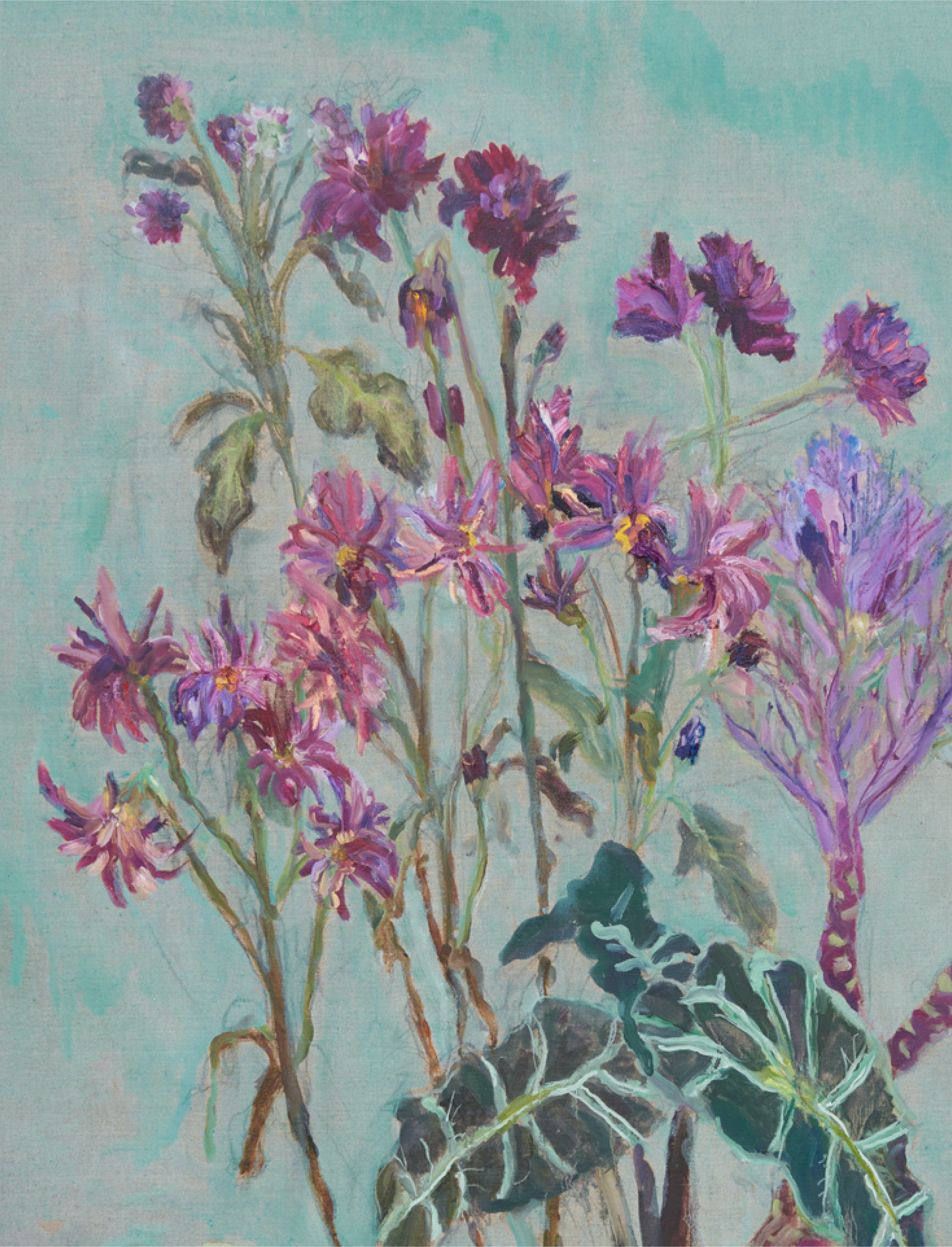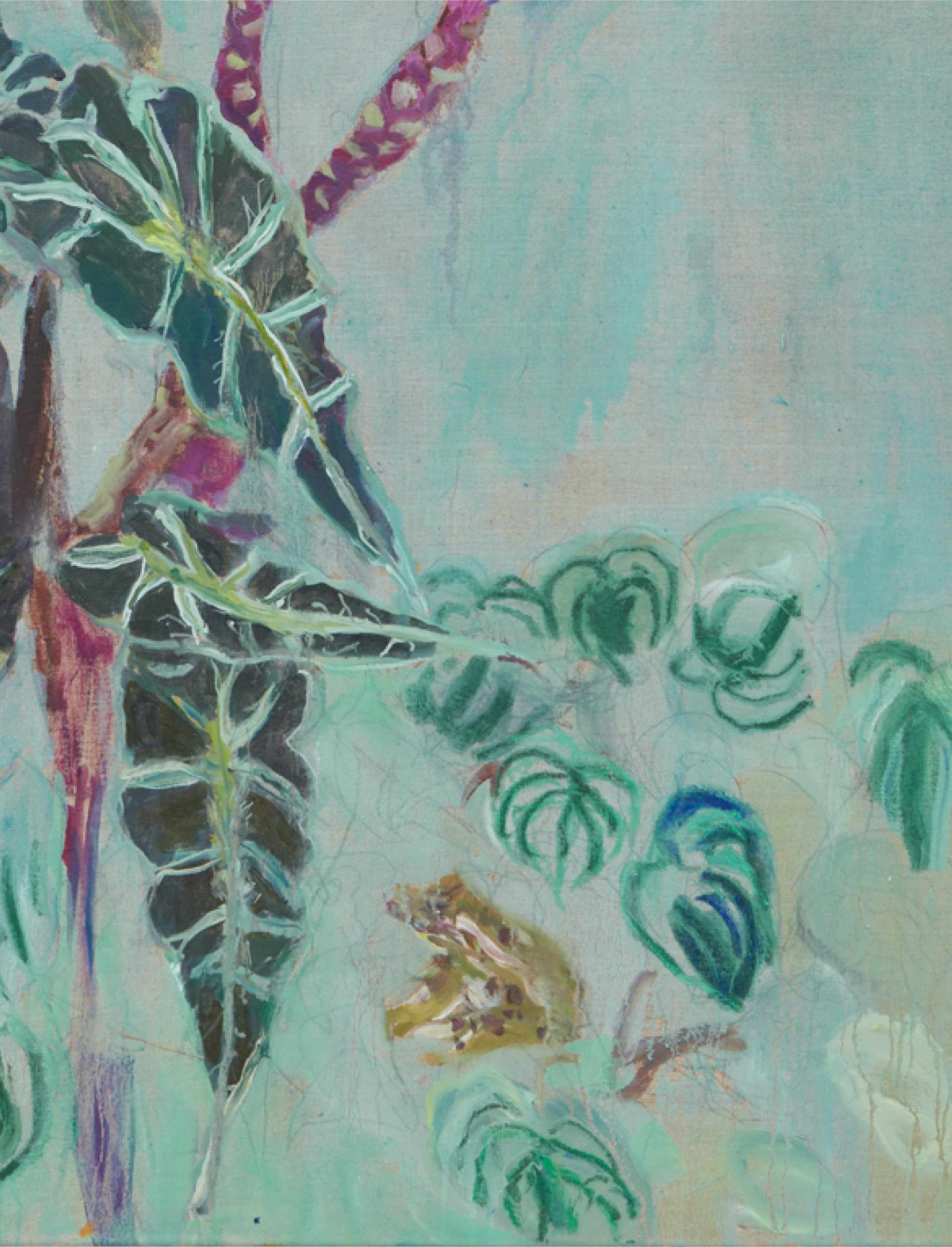Winter Flowers by Sarah Lederman
It's curious in a way that the Vanitas tradition of floral painting focuses on death, on flowers seen as signs of the transience that extends to the fact that we will die. Curious because flowers are after all the sexual organs of plants, making them primarily about life. That's what Sarah Lederman picks up on in her recent paintings.
Her flowers aren't cut and stuck in a vase, they're painted as still in the ground and growing. Previously, Lederman has most often painted human and animal bodies, but, she says 'I think of them in a similar way as biological spaces' and thinks back to how 'I did biology A level, I was always interested in the cells, the way things are made up'.
In fact there is a small frog in this painting too, and Lederman says that there were also many frogs' eggs at one stage, but they were painted out. She doesn't see the frog as a cute addition: 'I tend to paint small animals that are actually disgusting, the sort you get plagues of, like ladybirds and frogs' and she thinks of the grossness of being covered in frog's eggs, and of frogs attempting to hump everything — I saw one on a fish'. But that's also a vision teeming with life, and consistent with a personal angle on the flower paintings: in her mid-thirties, Lederman has been thinking about fertility, and recently had her eggs frozen, future-proofing the possibility of having children. That, incidentally, involved IVF: it is, she points out, 'not a cheap or simple process to get to the same position as a man is in anyway'.
So yes, these are very fertile flowers. They're also paint, of course, a fact undisguised by Lederman's handling, and emphasised by the blue on one edge that doesn't read as anything else. 'It's important for me to have a way to make the paint come first, she says, 'people tell me 'that's very you' when there's a bit of disruptive colour — that's when it is most about painting, about how the colour reacts. The blue made it finished, stopped it being just a picture of flowers.’
Text by Paul Carey-Kent


